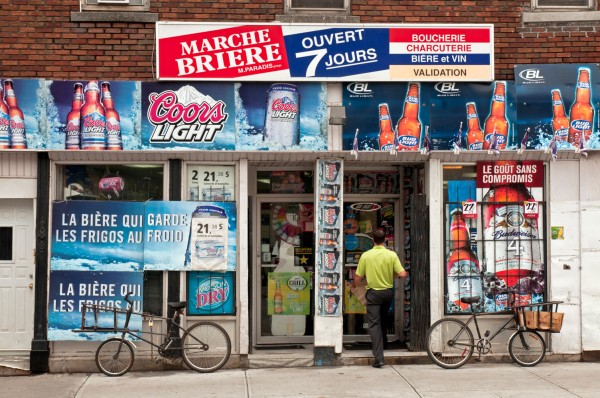Photo flâneur
One of my photo contacts looked at one of my shots from a recent trip to Montreal and suggested I was becoming a “veritable flâneur.”
In Quebec, the term “flâneur” has negative connotations — like vagrant, vagabond or loiterer. Some stores even post signs saying “defense de flâner,” suggesting they don’t want kids hanging outside the doorway after making their purchases.
In Europe, the term “flâneur” has other connotations. My photo contact referred me to the Wikipedia entry discussing the term “flâneur” as Charles Baudelaire intended it, meaning more of a “gentleman stroller of city streets” or someone who is a detached observer of city life. The article goes on to discuss how street photography has become a modern extension of the 19th century urban observer.
Montreal is a wonderful city in which to be a “flâneur” in Baudelaire’s sense of the term. It has such a vibrant mix of cultures set against exciting architecture, both modern and old.
As for street photography, Montreal presents a unique challenge. Quebec has the most restrictive laws against street photography in North America. Essentially, you can be sued if you publish a photo of someone without their consent and if they are identifiable. The exception, which seems to allow news photography, is if the photo serves the public interest (whatever that means). It’s a vague term that presumably suggests that art and documentation of city life are not in the public interest, whereas news reporting is. Whether or not a court would actually rule that the photo damaged a person is beside the point — few photographers can afford to go to court, so the law instead becomes a tool of blackmail. It’s as though the fundamental freedom of expression guaranteed by 2(b) of the Charter of Rights and Freedoms has only limited validity in Quebec.
Of course privacy is also a right, and I’ve seen some street photographers who cross the line in that regard. But I tend to think that if a person is doing a public activity in a public place, they should be fair game for a documentary style of photographer.
Being unprepared to challenge Quebec’s law, I reluctantly change my photography style in Montreal. I tend to shoot people in ways that they are more anonymous, either by using motion blur, or photographing from behind. And I take more pictures of buildings and non-human subjects. That’s not to say I’ll always obscure people’s identities if they’re doing a public activity in a public place, but I usually err on the side of caution. And sometimes the results work well.

















I love the pictures Richard, they are both great.
Very rarely is there any action taken on photographs of people taken in public, especially when the photos are used for artistic purposes. the cost of suing someone, is no way worth the amount that they can obtain. In other words the one suing is likely to lose a lot of money, and he/she needs to make an effort to inform you that the picture violates there right, and have to prove that you basically ignored that request or did not comply to not use that photo.
the only real issue is if the photograph was used for commercial purposes, like advertising for the gap, or if you were doing an exhibition where you and the hosting gallery were able to profit in some way.